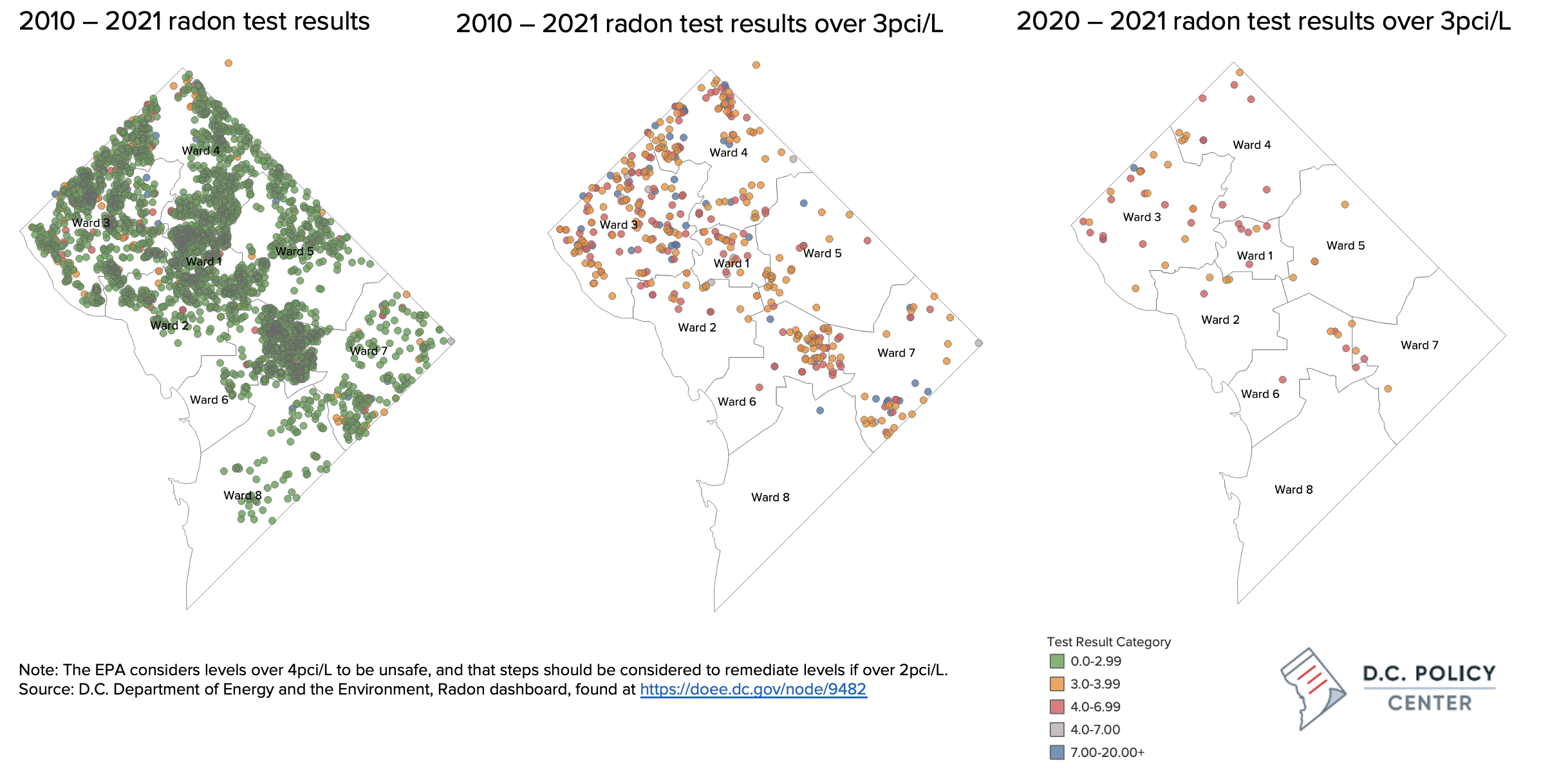Environmental toxins can have serious health effects. Previously, the D.C. Policy Center has written on the distribution of toxins across D.C. in the soil, water, and air. One such environmental toxin is radon, a gas that comes from uranium deposits in soil, rocks, and water.
Radon is the second leading cause of lung cancer in the United States, behind smoking.1 Lung tissue becomes damaged when radon gas is inhaled. Once in the lungs, radon gas undergoes radioactive decay, releasing alpha particles that damage lung tissue DNA—and can later lead to lung cancer.
Radon gas is emitted from soil around homes, and as air rises, it can seep homes through floorboards, cracks in walls, and windows. The EPA estimates that radon can be found in as many as one in 15 homes in the United States.2
To determine in-home radon levels, properties must be individually tested as radon levels can vary widely from house to house. The District Department of Energy and the Environment (DOEE) provides free radon test kits, and the EPA and Surgeon General recommend taking steps to remediate levels over 4pCi/L.
Most homes tested in the District are within safe levels of radon, but testing is uneven across the District’s wards. Test results over 3pCI/L in the last 10 years have been especially high in Wards 3 and 6, where much of the testing has occurred. Ward 8, and to a lesser extent Wards 5 and 7, in contrast, has had very little radon testing as compared to other wards.
Thankfully, radon remediation methods can reduce radon gas in a home by up to 99 percent. Methods for remediation include sealing cracks and openings in the home, increasing ventilation, or using suction to capture radon below the home.3 However, as remediation is at the discretion of the homeowner, we have no data on the current rates of radon in homes that have been tested in the District.
Endnotes
- Radon is the leading cause of lung cancer among non-smokers, and the second leading cause of lung cancer for the general population. Consumer’s Guide to Radon Reduction – U.S. Environmental Protection Agency. https://www.epa.gov/sites/default/files/2016-12/documents/2016_consumers_guide_to_radon_reduction.pdf
- Radon. DOEE. https://doee.dc.gov/node/9482
- Consumer’s Guide to Radon Reduction – U.S. Environmental Protection Agency. https://www.epa.gov/sites/default/files/2016-12/documents/2016_consumers_guide_to_radon_reduction.pdf
